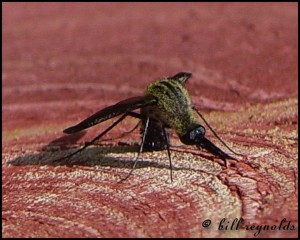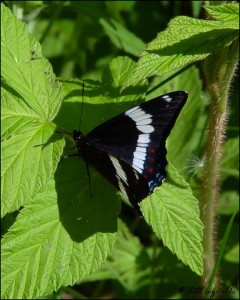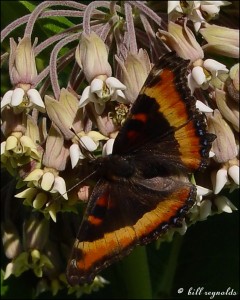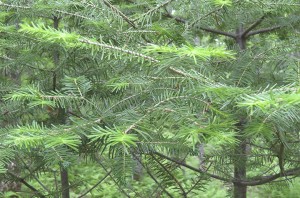The hunchback bee fly (Lepidophora lutea) is a medium-sized bee fly with a distinctly hunch-backed appearance. It is fairly common and widespread in eastern North America. It’s unusual shape mimics the robber fly. The larvae are kleptoparasitic, eating the collected food in the nests of solitary wasps, and possibly also parasitic, eating the larvae in the host’s nest.
http://www.minnesotaseasons.com/Insects/hunchback_bee_fly.html





